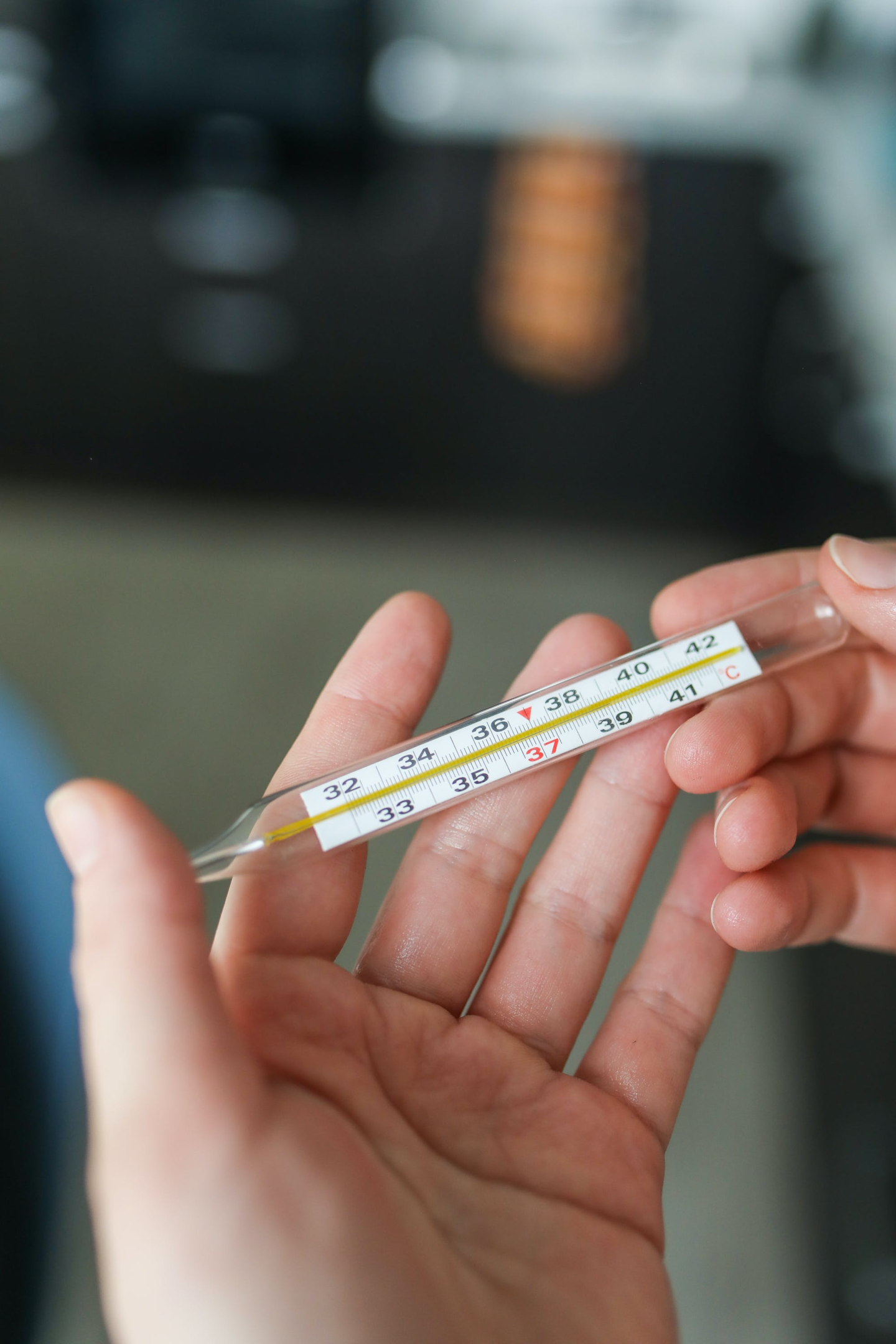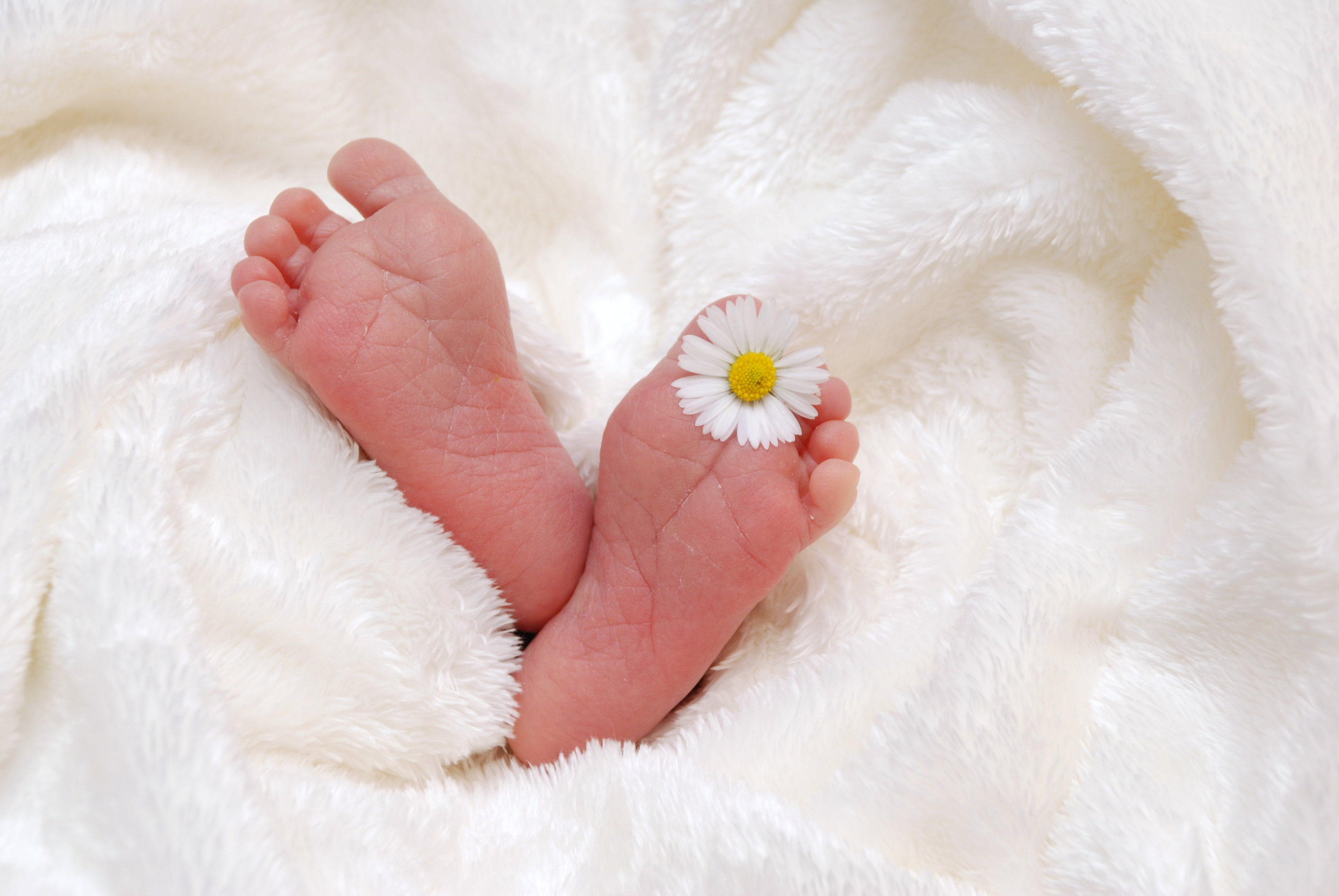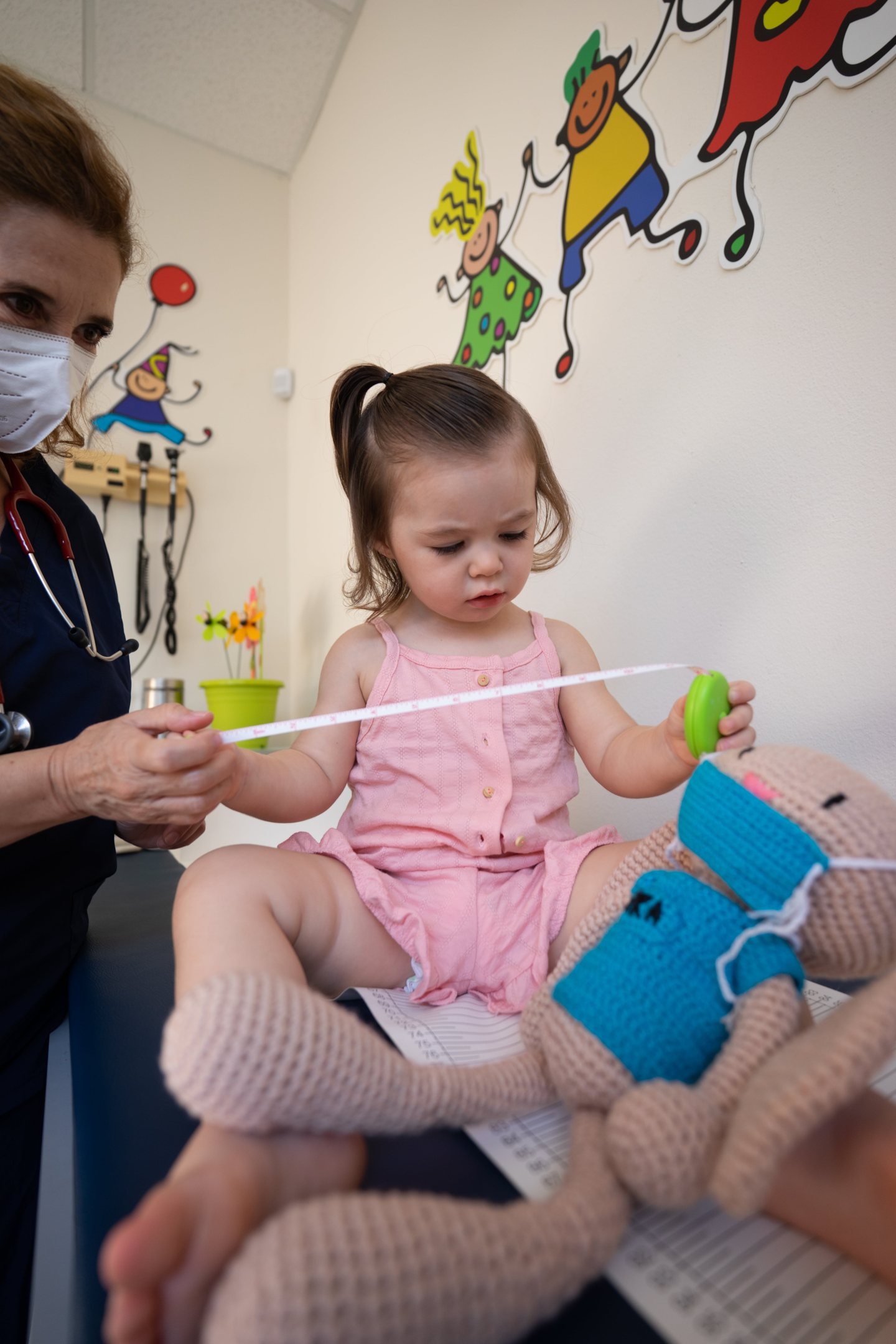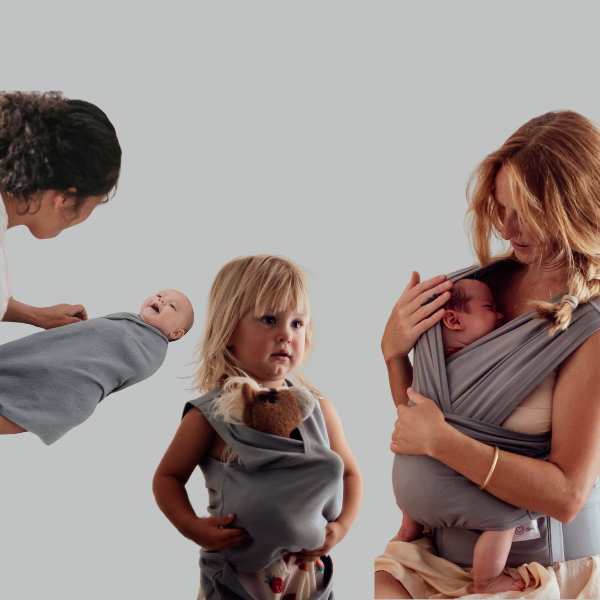With the holiday season around the corner - so it's summer!
In this blog, we're talking about the ins and outs of keeping your little one comfy when the heatwave hits. From decoding signs of overheating to sharing practical tips on creating a cool and comfortable space for your baby!
Infants and toddlers face an elevated risk of heat-related illnesses because of their limited ability to regulate their body temperature and take actions to prevent overheating.

The concerns surrounding newborns and babies' temperatures reflect the deep sense of responsibility and care that parents, both new and experienced, feel for their infants, babies, and children. If you've ever seen how children handle fever, you'd know what this is all about.
Understanding Newborns Temperature
The important fact to remember is that a normal body temperature range for a baby, ranges from 36.6 to 38 c to 37.4 degrees Celsius (97.5 to 99.3 degrees Fahrenheit) and this temperature reading serves as a benchmark for assessing a child's health.
Any deviation from this normal temperature range, whether in the form of a fever or low body temperature, requires intervention if the baby seems uncomfortable. Recognizing this reference point emphasizes the need for parents to stay vigilant and attuned to any variations that may occur.
One common method for monitoring a baby's temperature is by taking it in the armpit, a practice known to yield generally accurate results.

Infants, when sick, face heightened susceptibility to infections, with viral infections emerging as a frequent culprit behind elevated temperature readings. The manifestation of these infections presents itself in various ways, providing clues to a doctor and parents about potential health concerns.
Early Signs to Look For:
Flushed cheeks, fever, a dry mouth, and, in severe cases, difficulty in breathing serve as indicators that prompt a doctor to call to action.
The gravity of these concerns is accentuated by the fact that infants cannot show high temperature or articulate their discomfort verbally. Therefore, parents rely on keen observation and a proactive approach to address potential issues promptly. The link between elevated temperatures emphasizes the multifaceted nature of caring for an infant's health.
When to Not Worry:
Mild temperature fluctuations are normal. If within the normal range and your baby appears comfortable, eats well, and has a healthy skin color, no need to worry. Infants may feel warm when swaddled or layered.
When to Worry:
While slight variations are normal, persistent high or low temperatures may indicate an underlying issue. If your baby's temperature consistently exceeds 100.4°F (38°C) or falls below 97°F (36.1°C), consult your healthcare provider promptly.
Other signs to watch for include lethargy, difficulty breathing, poor feeding, or a change in skin color. These may be indicators of an infection, illness, or other health concerns that require immediate attention.
What do I do when my child's temperature is higher than the normal body temperature?
When addressing your child has a fever or a situation where your baby or child has a fever or's temperature is notably higher than the normal range, a comprehensive approach becomes indispensable for their well-being:
Offer Fluids Regularly
Hydration, taken either through bottle feeding or whatever means, takes center stage, particularly for infants, as it serves as a key indicator of their overall health. Acknowledging that dehydration is the most common cause and often an early sign of trouble, it is crucial to ensure that your baby is consistently taking in clear fluids. For babies six months or older who have begun incorporating solid foods, extra breastfeeds, as well as cool baths can play a pivotal role in avoiding dehydration. This multifaceted approach not only aids in temperature regulation but also contributes to the baby's overall comfort.
Dress Your Baby Appropriately
As the summer months bring warmer temperatures, the importance of dressing your baby in a manner that promotes comfort cannot be overstated. Go for a single layer of light clothing, coupled with a lightweight blanket for sleeping, to strike the right balance. Beyond attire, paying attention to signs such as flushed cheeks and a dry mouth provides valuable insights into potential infections. In this regard, creating a light and breathable room environment further enhances your baby's overall comfort.
BabyWear with BabyDink

Investing in high-quality baby carriers can also play a crucial role in maintaining your baby's comfort during the warmer months. Products such as BabyDink's carriers offer not only softness but also breathability, ensuring a comfortable experience for both parent and baby.
Crafted with GOTS-certified organic cotton yarn, BabyDink ensures a snug fit with 90% cotton and 10% spandex front straps and a 100% cotton pique back section. The high-quality elastic and Velcro hipband guarantees secure and gentle support.
Committed to safety, BabyDink skips harmful chemicals in the dyeing process, offering an eco-friendly, non-toxic experience, even if colors vary slightly.
A comprehensive approach coupled with the right caregiving tools, ensures a well-rounded strategy. As you prioritize your baby's comfort, consider investing in thoughtfully designed and organic products, such as BabyDink's carriers, to enhance the overall well-being of your little one during the summer and beyond.
Monitor the Temperature
If your baby's temperature remains elevated and shows no signs of improvement, seeking medical treatment and advice is imperative. This is especially true if symptoms like trouble breathing, stiff neck, and a cold ear are present, as they might indicate a more severe bacterial infection. Employing a reliable thermometer becomes a valuable tool for accurate temperature monitoring. If the temperature reading ever surpasses 38°C, prompt medical attention is advisable to address and treat any potential health concerns promptly.
Avoid Direct Sunlight
The recommendation that babies under 6 months should not be exposed to direct sunlight is based on their delicate and sensitive skin. The skin of infants in this age group is not yet fully developed, making it more susceptible to the harmful effects of ultraviolet (UV) rays from the sun. Their skin has less melanin, the pigment that provides some natural protection against sun damage, and is more prone to sunburn and dehydration.
What do I do if my baby's temperature is lower than the normal temperature range?
If your baby's temperature ever is lower than the normal range, take the following steps:
Ensure warmth
Keep your baby warm by dressing them in layers, using blankets, and maintaining a comfortable room temperature. Avoid exposing them to cold drafts or cold environments, as low average body temperature can also be a cause for concern. Pay attention to the average body temperature of the baby's extremities, such as hands and feet, as these areas are more prone to getting cold.

Skin-to-skin contact
Holding your baby against the body heat of your skin provides warmth and comfort, aiding your child in raising their body temperature. Use a thermometer to get accurate temperature readings, and if the child's temperature falls below 38°C, it's advisable to seek medical advice promptly
Conclusion
Seek medical advice
If your baby's temperature remains low and they display other signs of discomfort or distress, consult with a healthcare professional promptly. It's important to note that low body temperature can rarely be harmful, but treating it still requires attention.

If you suspect your baby has overheated, promptly cool them down by removing excess clothing, giving a cool bath or using a washcloth, relocating to a cool room with a fan, offering a drink or breastfeeding for hydration, and avoiding fever-reducing medications as they may not effectively address heat-induced temperatures.

Parents are strongly encouraged to visit the nearest hospital emergency department, where healthcare professionals can conduct a thorough examination and diagnostic assessments to address any potential issues related to overheating.
Prompt medical attention is not only a proactive response but can also make a significant difference in handling newborns' temperature-related issues. The delicate nature of infants' developing immune systems emphasizes the critical role that immediate care plays in safeguarding their health life.
References:
Pregnancy, Birth and Baby (2023, October 13). Keeping babies cool in hot weather. Healthdirect Australia. https://www.pregnancybirthbaby.org.au/
Australia, H. (2023, December 11). Hot weather risks and staying cool. Healthdirect Australia. https://www.healthdirect.gov.au/hot-weather-risks-and-staying-cool








Leave a comment (all fields required)